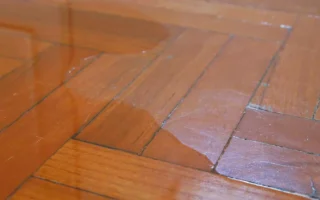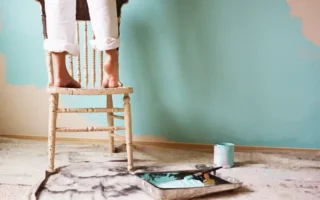Cleaning up cooking oil spills promptly is crucial for maintaining a safe and tidy kitchen environment. By acting quickly, you can prevent slipping hazards and limit the extent of the mess. Having the right materials on hand makes cleanup easier. With items like paper towels, absorbent powders, or even cat litter, you’re ready to tackle spills efficiently. A clear step-by-step guide ensures that you address every aspect of the spill effectively. It’s all about knowing how to blot it up without spreading it further.
Preventing future incidents involves being mindful while cooking and using appropriate containers for frying or sautéing foods. A little caution goes a long way in avoiding messy situations. Exploring alternative methods for cleaning oil spills can also be beneficial. Whether using vinegar solutions or specialized cleaning products, various options suit different preferences.
Disposing of used cooking oil properly helps protect our environment from harm. Always check local regulations to ensure responsible disposal practices are followed. A proactive approach will keep your space clean and enhance your overall cooking experience.
The importance of cleaning up oil spills immediately

Timeliness is key when it comes to cleaning up oil spills. The longer you wait, the more difficult it becomes to tackle the mess. Cooking oil can seep into floorboards or grout, leading to staining and lingering odors.
Immediate action also reduces safety risks. A slippery floor can easily result in accidents, putting you and others at risk for falls and injuries.
Leaving an oil spill unattended may attract unwanted pests like ants or rodents searching for food sources. This could lead to a new set of problems requiring additional cleaning efforts.
Materials needed for cleaning up oil spills
To tackle cooking oil spills effectively, gather a few essential materials beforehand.
Start with absorbent items like paper towels or old rags. They soak up the oil quickly and prevent it from spreading further.
Next, grab some baking soda or cornstarch. These powders can help absorb excess oil and make cleanup easier.
For more stubborn stains, keep a bottle of dish soap handy. It cuts through grease effortlessly when mixed with warm water.
Have a trash bag ready to dispose of used materials properly once you finish cleaning up.
Step-by-step guide for cleaning up cooking oil spills on the floor

The first thing you need to do is grab some paper towels or a clean cloth. Start blotting the spill gently to absorb as much oil as possible. You should avoid rubbing the mess; this will spread it.
Next, sprinkle baking soda or cornstarch over the area. These substances will help soak up the remaining oil. Let it sit for about 15 minutes before sweeping it away.
Once most of the oil is absorbed, it’s time for soapy water. Mix a few drops of dish soap with warm water in a bucket and prepare a sponge or mop.
Wipe down the affected area thoroughly with your soapy solution. Rinse with fresh water afterward to remove any slipping hazards.
Dry the floor using another clean towel or let it air dry if possible. This ensures no slippery spots remain that could cause accidents later on.
Tips and tricks for preventing future oil spills
Preventing future oil spills in the kitchen starts with careful preparation. Always keep a towel or absorbent cloth nearby while cooking. This way, you can quickly wipe up small drips as they happen.
Invest in spill-proof containers for storing and pouring oils. A good quality bottle with a spout minimizes mess during use.
When frying or sautéing, avoid overfilling the pan. Less oil means less chance of spills when moving pots around.
Consider using splatter guards or lids to contain any accidents that might occur while cooking at high temperatures.
Regularly inspect your cooking area for hazards like loose cords and uneven surfaces. Keeping everything organized helps prevent slips and falls caused by spilled oil.
Alternative methods for cleaning up oil spills
For those who prefer natural solutions, cornstarch can be a game-changer. Sprinkle it over the spill and let it sit for about 15 minutes. The starch absorbs the oil, making cleanup easier.
Another option is to use baking soda. Similar to cornstarch, it absorbs excess oil. Once you’ve applied it, sweep the residue and clean it with soapy water.
If you’re looking for something more absorbent, cat litter works wonders, too. Spread some on the affected area, allow it to soak in the oil for a while, then sweep and dispose of it properly.
Dish soap can cut through grease effectively. Mix with warm water and scrub gently with a sponge or cloth until you see improvement.
How to dispose of used cooking oil properly
Disposing of used cooking oil requires care to protect the environment. Pouring it down the drain can clog pipes and contaminate water sources.
Instead, let the oil cool completely after use. Once cooled, transfer it into a sealed container, such as an empty bottle or jar. Make sure it’s airtight to prevent leaks.
Check for local recycling programs that accept cooking oil. Many areas have facilities for processing used oils into biofuels or other products.
If no recycling options are available nearby, you can throw small amounts in your regular trash. Just ensure it’s in a sturdy container so it doesn’t spill during collection.
Avoid pouring large quantities directly on compost piles or garden beds; this could attract pests and create odors. Always prioritize safe disposal methods for a cleaner planet and healthier home.




